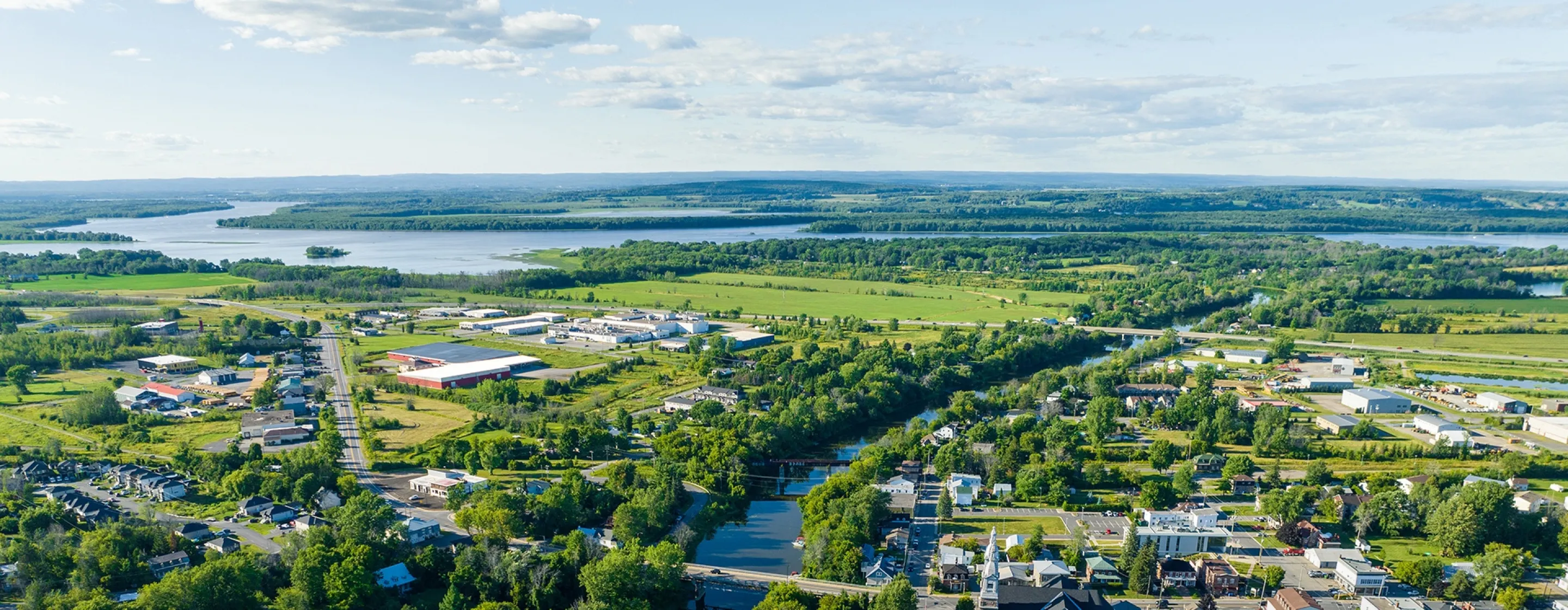Quebec is in greenhouse gas (GHG) emissions reduction mode, and Énergir is taking action.
The right energy, at the right time and place.
Our strategic vision of decarbonization is our commitment to society and our customers to contribute to this important collective effort. Our vision includes concrete measures - energy efficiency, renewable natural gas, energy complementarity - that enable us to play a key role in addressing climate, economic and social issues for our customers and for Quebec.
We want to decarbonize the energy in our distribution system and get involved wherever and whenever we can contribute. How do we get there? To start, by reducing the volumes of fossil natural gas we distribute and gradually replacing the remaining volumes with renewable energy.
To achieve this, we are focusing on four strategic priorities
Increase our energy efficiency efforts
The best energy is the one we don’t consume. We aim to prevent our customers from emitting around one million tonnes of GHGs by 2030, compared to 2020 levels, through our energy efficiency programs.
Develop strong complementarity with electricity
The electrification of the economy poses significant capacity and cost challenges in the Quebec context of peak winter. Energir and Hydro-Québec are proposing electricity-natural gas dual energy, which makes it possible to electrify most of the heating of customers currently using natural gas, while limiting the impact on the power grid during peak winter periods.
Dual energy means using the right energy, in the right place, at the right time, at the best possible cost to society1. Thanks to dual energy, Energir is pursuing its objective of reducing greenhouse gas emissions attributable to the use of natural gas by its customers by around 400,000 tonnes by 2030, compared with 2020.
10% RNG target
We are working hard to acquire sufficient quantities of renewable natural gas (RNG) as a proportion of total gas delivered by our fiscal year 2030-2031. This is a regulatory obligation that we support.
Diversify into new vectors of growth
The future of energy is exciting, and we’re working to develop new vectors of growth. We’re looking at a number of promising avenues for the future such as expanding the energy loop market, pursuing wind power projects and exploring investment and partnership opportunities in green hydrogen and carbon sequestration. Last but not least, we’re focusing on research and development and innovation.
Carbon footprint reduction targets
We’re relying on the combined impact of these actions to reach the ambitious targets we have set. Find out more in our climate resiliency report.

37.5% reduction in our direct and indirect GHG emissions (scope 1 and 2) from our natural gas distribution operations by 2030, compared with 1990 levels.

30% reduction in GHG emissions from the energy we distribute in buildings by 2030, compared with 2020 levels.

Decarbonization of the energy distributed to our customers by 20502.
Énergir Group
At the group level, Énergir and its subsidiaries are focused on the long term and think of energy not as a product but as a service that should meet various needs as well as possible, including that of reducing GHG emissions in order to move towards a lower-carbon economy.
We imagine energy differently.

Legal notice
1. By reducing pressure on the power grid during periods of high demand, dual energy avoids the need for major investment in new generation, transmission and distribution infrastructure. The complementary nature of electricity and natural gas helps stabilize energy costs by reducing peak consumption, thereby limiting tariff increases for all users. Dual energy therefore represents an economically advantageous solution for society, while promoting more efficient management of energy resources for Quebec.
2. Scope 3 emissions, category 11 (use of products at customer sites).



